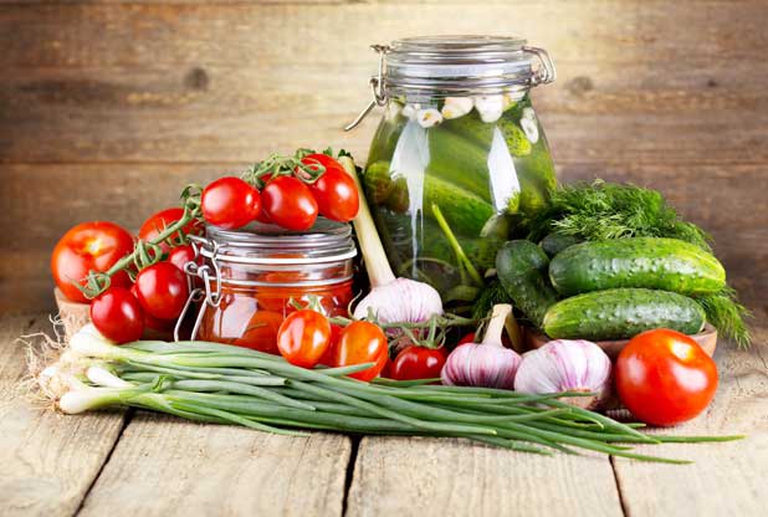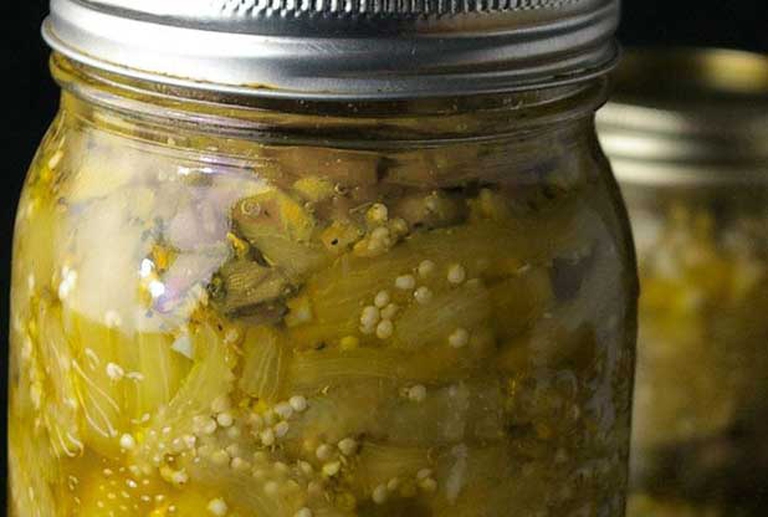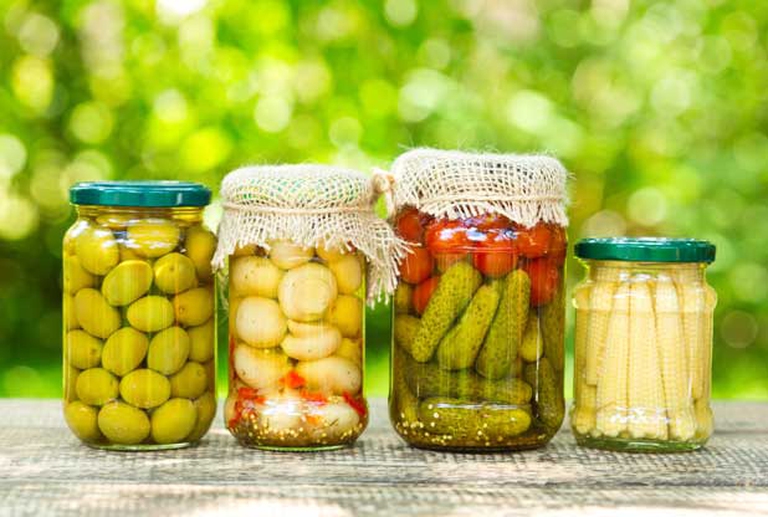
Factory farming conditions and antibiotic-resistant pathogens emerging as a result of them pose an existential threat to humans in the form of zoonotic diseases. Why it’s time to produce and consume food more thoughtfully.
In oil, vinegar or au naturel, vegetable preserves allow you to taste all year long the produce of summer orchard.
The best vegetables to use to make preserves are fresh, seasonal and – if possible – organic vegetables. It is advisable to avoid using early produce because it is not so tasty, is bitter, has a greater environmental impact and is more expensive than the vegetables grown in season.
You just need to clean them with running water so that they don’t absorb too much water. Some vegetables, such as aubergines, must be salted so that they lose their bitter vegetation water. Then, you have to cut vegetables into small pieces, cook in water and vinegar for a few minutes and dry them. All the ingredients must be perfectly dry because even the slightest hint of humidity can cause a preserve to grow mouldy.
White wine vinegar is better than red wine vinegar because the former keeps unchanged the colour of the preserve and is lighter than the latter. Vegetables suitable to be pickled include peppers, cucumbers, beetroots and cauliflower. After preparing them, you should put the vegetables into a jar, cover them with vinegar and then close the jars hermetically without sterilizing them. If you keep them in a fresh environment, they will stay good from eight to twelve months.
Code word: extra virgin olive oil. The most suitable oils for their delicacy are those from Liguria and Tuscany, but for those who prefer a stronger taste it is better to opt for extra virgin olive oil produced in Southern Italy. The vegetables that can be pickled in oil are aubergines, mushrooms, artichokes and stuffed tomatoes. After cooking them, you should adjust them in glass jars and cover them with oil, avoiding to leave empty spaces or air bubbles. Sterilise if the recipe requires it. They are ready after fifteen days and should be consumed within a year.
It is suitable for asparagus, carrots, peas, and green beans. You just need to boil the vegetables in salty water and let them dry. Put them in a jar with the preservation liquid obtained by melting 8 grams of salt per litre of water. Sterilise and leave the jars filled with vegetables in hot water for at least one hour.
Preserves, labelled with date of expiry, should be kept in a dark and fresh place, away from heat sources.
How to sterilise containers
Sterilisation is necessary. You should boil the containers in a pot of water for at least 5 minutes. Then you have to remove them with pliers or a carving fork and place them upside down on a clean rag. After about ten minutes you should turn them to make water evaporate. When you use them they must be completely dry.
How to sterilise vegetable preserves
Whether they are pickled in oil, in syrup or au naturel they need to be sterilised. Once you close the jars, you have to put them in a pot filled with water until 2/3 of the jars’ height. If the content is cold, use cold water; if the content is hot, use hot water. It is advisable to wrap the jars in a cloth in order to avoid breaking them. Follow the sterilization times of the recipe.
Siamo anche su WhatsApp. Segui il canale ufficiale LifeGate per restare aggiornata, aggiornato sulle ultime notizie e sulle nostre attività.
![]()
Quest'opera è distribuita con Licenza Creative Commons Attribuzione - Non commerciale - Non opere derivate 4.0 Internazionale.
Factory farming conditions and antibiotic-resistant pathogens emerging as a result of them pose an existential threat to humans in the form of zoonotic diseases. Why it’s time to produce and consume food more thoughtfully.
The world of cinema recognises the link between food choices and the climate crisis by offering vegan menus for awards season events, including at the most important of them all: the Oscars.
In Japan, with the tempura batter is used mainly to prepare seasonal vegetables, shrimps and squids, on rare occasion meat. Tempura is a particularly light kind of frying technique, with which luscious and crunchy food is prepared. And it is easy to prepare, if you know the basic rules to make it. The batter
Let’s look at the reasons behind the growth of veganism in India, as a small yet vocal section of the population turns towards this diet and lifestyle in the largest milk producing country in the world.
by Jeffrey Y. Campbell, Manager of the Forest and Farm Facility at FAO In the Ecuadorian Amazon, Kichwa farmers grow dozens of products on tiny parcels of land. Their lands hum with biodiversity, yielding nutritious foods that have sustained families for generations. Wandering among fruit and nut trees and crops, these indigenous agroforesters fill their baskets
Mint has many health benefits, but in food it’s often accompanied by artificial green colourings. Instead, Galatea has created a green mint ice cream in a completely natural way.
We’re talking about Galatea, a company that produces semi-finished products for artisanal ice creams using high quality ingredients, natural colouring, excluding thickeners and hydrogenated fats, respecting the environment and supporting the less fortunate.
The mad rush to fake food, like fake meat made with genetically-modified soy, ignores the importance of the diversity of our foods and culinary cultures. It’s a recipe to accelerate the destruction of the Planet and our health.
Like with all foods, the quality of an ice cream can be discerned by reading its label. An expert explains how to do this, and tells us how their company steers clear of chemicals, using only natural ingredients to produce an excellent and “free” ice cream.












